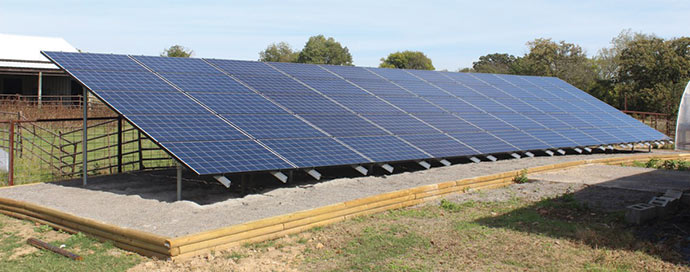Oklahoma is often known as an energy state, playing a major role in the oil and gas production industry. It is rapidly becoming known in energy circles for its wind power. The natural next step in the energy evolution is solar power.
With the Sooner State’s location on the fringe of the Sun Belt, one would think solar energy would play a prominent role in the energy picture. But that’s not quite the case — at least not just yet.
It’s true that geographical location is one of the keys to solar energy potential, with Southwestern states California, Arizona, New Mexico, Texas and Nevada having a built-in advantage. However, the amount and intensity of sunlight is just one piece of the solar energy puzzle.
A state’s solar energy policies and incentives are often as important — and in some cases, more critical — than the sunlight itself.
Solar energy has been somewhat slow to develop in Oklahoma for what many consider a good reason: the cost of electricity in Oklahoma is among the lowest of any state. According to the U.S. Energy Information Administration, the average cost of electricity in Oklahoma for the month of August 2016 (the latest month available) was 8.48 cents per kilowatt hour. This compares to 10.83 cents per kilowatt-hour for the U.S. average — a savings of 22%.
In fact, Oklahoma boasted the sixth lowest cost of electricity for that period with only Washington, Louisiana, Idaho, Wyoming and Kentucky having lower cost per kilowatt-hour. At the other end of the spectrum, Connecticut (16.70 cents) and Massachusetts (16.45 cents) possess the highest kilowatt-hour cost among the contiguous states.
According to Tyler Ogden, a solar analyst at Boston-based Lux Research, the state of Massachusetts averages about 3.5 “sun-peak” hours a day whereas Oklahoma averages 5 to 6 hours per day. But despite having less solar potential, Massachusetts ranks number six in solar capacity and Oklahoma ranks 45th.
Ogden explains that the top solar states are aggressive with tax incentives and environmental mandates for renewable energy. They also make it convenient and economical for individual customers to add solar to the power grid.
Still, solar power is growing in Oklahoma. According to the Solar Energy Industries Association (SEIA), the national trade association of the U.S. solar energy industry, $7 million was invested on solar installations in Oklahoma in 2015.
The U.S. Energy Information Administration reports that 3.7 megawatts (MW) of solar capacity were installed in Oklahoma in 2015 which represents a 526% increase over 2014. This ranks Oklahoma 38th in 2015 installed capacity.
Oklahoma is growing its solar-ready workforce and education programs, setting the stage to support increased investment going forward. Specialized renewable and sustainable energy degree programs are offered through Oklahoma State University (OSU), OSU-Oklahoma City, Rogers State University, Tulsa Community College and the University of Tulsa. The state’s nationally-recognized CareerTech centers offer specialized training to prepare students for careers in the solar industry and teach technical skill sets that form the foundation for solar array installation and maintenance technicians.
“Solar is playing an increasingly important role in Oklahoma as the technology advances and becomes more cost competitive,” said Janet Smith, Manager, Economic Development, Public Service Company of Oklahoma (PSO). “PSO’s long range plan for its service areas in Oklahoma includes adding 200 megawatts of large scale solar between 2021 and 2024.”
